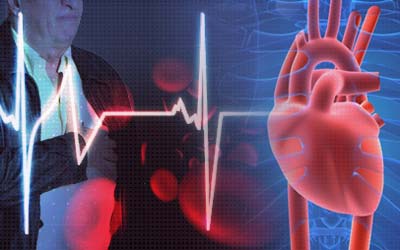Sex to Earthquakes: What Causes Heart Attacks

Anger really can trigger a heart attack. But then, so can getting sick, being too hot, being too cold, air pollution, lack of sleep, grief, overeating, natural disasters, exercise and sex. In fact, simply waking up is the worst thing you can do if you're trying to avoid a heart attack. Heart attacks, strokes and cardiac arrests seem to come out of the blue, but actually most occur upon rising in the morning, according to the July 2007 issue of the Harvard Heart Letter. Before waking, our bodies release stress hormones into the bloodstream to give us the energy to get out of bed, but this also strains the heart slightly. That bump can cause a cardiac event if one's arteries already are rife with festering cholesterol-rich plaque. The dehydration that normally occurs after a night of sleep also puts a plaque-plagued circulatory system at risk. Also, heart medications wear off during the night. A bout of anger can increase the chances of having a heart attack up to 14-fold for two hours following a flare-up, the Letter states. Strenuous exercise such as shoveling snow or running can be a trigger, but exertion is much less likely to cause trouble in people who exercise regularly. So stay in shape, the authors advise. Infectious diseases such as pneumonia and the flu can also trigger heart attacks and strokes. The fact is that most people sleep too little, rise and shine, make love, shovel snow, eat too much, overheat, argue and recover from the flu without getting a heart attack. "Still, knowing what sets off heart attacks, strokes or cardiac arrests can help you avoid triggers or blunt their power," the Letter states.
- Video: Flu Myths and Truths
- The Top 10 Worst Heredity Conditions
- Top 10 Mysterious Diseases
Sign up for the Live Science daily newsletter now
Get the world’s most fascinating discoveries delivered straight to your inbox.
Robin Lloyd was a senior editor at Space.com and Live Science from 2007 to 2009. She holds a B.A. degree in sociology from Smith College and a Ph.D. and M.A. degree in sociology from the University of California at Santa Barbara. She is currently a freelance science writer based in New York City and a contributing editor at Scientific American, as well as an adjunct professor at New York University's Science, Health and Environmental Reporting Program.










